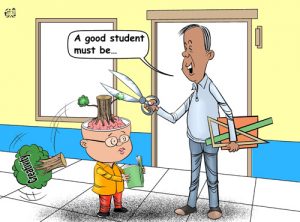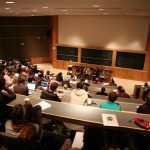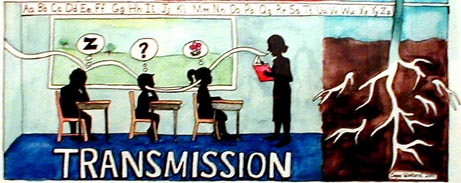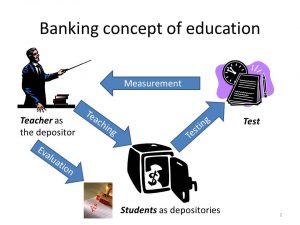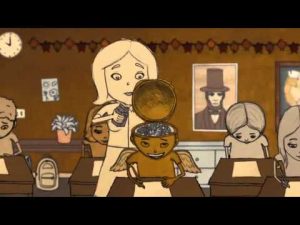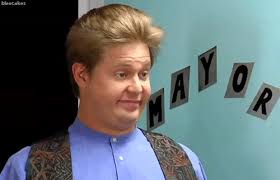Paulo Freire described the “Banking Model” as method that teachers use to teach in classrooms where the students creativity is cut. Freire describes this method as a way of oppression towards the students. The teachers “deposit” their knowledge into a student’s brain without allowing the students to express thoughts or questions they might have. They get information planted into their brain without actually understanding it. It limits a students input into their own learning not only that, but with this method of a teacher not allowing them to speak their mind a student can become “lazy” and feel as if they really do not know nothing. This is a form of oppressing the learners because an educator has the “power” to say and teach what they want to and not necessarily what they actually need and should know. A students takes in the information to a certain extent where it will help them pass their exams. Soon after it will be forgotten because they do not understand what they are being taught but rather try to remember it.
In my years of attending school I have luckily only encounter one teacher that went by this method. He would expect students to understand everything he lectured and would get upset when a student had a question. His teaching would be based off textbook reading and videos but never explanations. Facts were just thrown to the class and we had to remember them. My teacher would joke around about getting the information tatted so we would never forget it but it would be frustrating to just have to remember a date and not know why it mattered. As a result the students hated the class and more than 90% of the kids failed the exams. I personally can not remember anything from that class, I felt dumb when I did not comprehend something and I knew that if I asked the teacher for help he would get upset. He would just stand in front of the class and talk, he did not allow no one to leave to the bathroom, or even for water. Even though some may say this method can benefit some people I believe that it restricts the influence the students have to their own learning. A student should know why they are learning something and why it matters and not just be forced to remember it to pass their next test.
